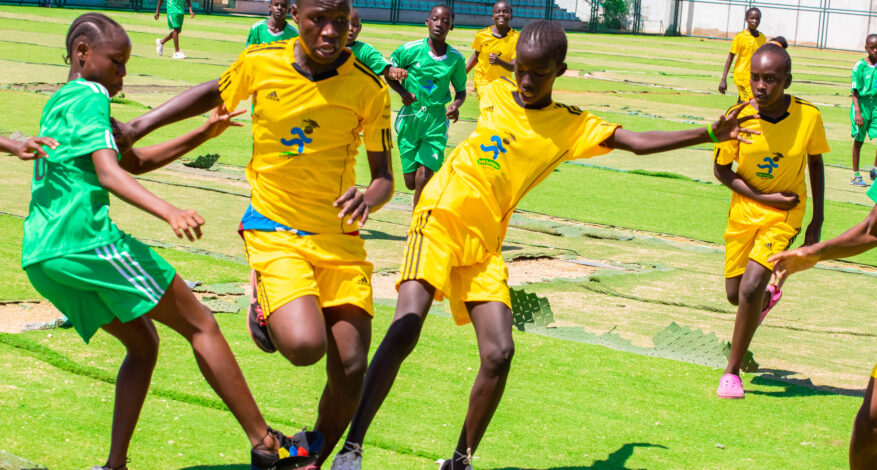Presently, there is a raging debate on where Grade 9 pupils will be domiciled. We hear profoundly opposing arguments on this subject daily; something that one could be forgiven for imagining is very straightforward, looking at the obvious circumstances surrounding it.
Of course, it is good to weigh the pros and cons on either side of the argument before reaching a rational conclusion. But even before that, an appeal to anyone’s own common sense lays the facts well enough.
Í have had occasion to talk to various groups on this issue. I have talked to teachers, students, parents, and educational administrators. Incidentally, there is no single group that seems to lean in one direction. And that, really, is as it ought to be.
On an issue of this social magnitude, it is a civil imperative that a thorough interrogation is applied and several instruments be placed in place for all considerations to be taken into account before the final decision. After all, if such a modus operandi had been used in the formative stages of the Competency-Based Curriculum (CBC), we would not be experiencing the current teething problems on issues such as the aforementioned one.
What I am saying is that this time round, we cannot afford another situation where we make irrational decisions and are forced to go back to the kitchen to redo the stew. Let us cook it thoroughly the first time.
The fundamental question: do we push the Grade 9 pupils (okay, students) to the present secondary schools, or do we leave them right where they are, in their former primary schools?
That, for all intents and purposes, is a trillion-dollar question. Literally. No question about it.
The Kenya National Union of Teachers (KNUT), through its top brass, seems to be of the view that the pupils remain pupils in their primary schools. They seem to favour the view that the strange title for our schools, i.e. X Primary and Junior Secondary School, should be maintained.
By the way, this is illegal. According to the Education Act, primary schools are registered to offer a curriculum as primary schools. That name is registered and before it is changed, the schools must apply for fresh registration. They must then receive a relevant certificate from the Ministry of Education which even specifies the number of streams in each Class/Form/Grade, and inter alia, the maximum number of learners in those levels. I digress.
One suspects that KNUT’s main motivation is money. The teachers heading the primary schools, who are mainly members of KNUT, want a share of that money for management purposes. Since the capitation is given per pupil, an extra one hundred pupils will really boost the primary schools’ kitty. Who doesn’t want to manage more money?
I recall when, on this forum, many of us came up in support of the domiciling of Grade 7 in primary schools. The argument was that there were no facilities in secondary schools to facilitate that shift. Secondary schools had Form 1 to 4 and to facilitate a Grade 7 class would mean building an extra twenty thousand new classrooms, each to accommodate fifty learners – that is around Ksh14 billion shillings on the lower side.
That, we argued then, was not only fiscally insuperable but also unnecessary. There would be the empty classrooms left by the Class 8 candidates. These would be utilized by the grade seven pupils, why not?
What is the scenario now?
All the pupils who were in Class 8 are now in high school. Grade 1 to 8 pupils are occupying all the available classes in primary schools all over the country. In effect, there is no empty classroom.
And what is the scenario in high schools?
Come next year, the present Form 4 candidates all over the country will have left secondary school. For a school like Rang’ala Girls or Kapsabet Boys, there will be a shortfall of 700 girls and 750 boys (the approximate number of Form 1 students they took this year). That means the ten or so classes will sit idle for 2025. Same as the dormitories, beds, labs, workshops and everything the new Form 1s would have used had they been admitted in January 2025.
As these facilities will be begging to be used by deserving Kenyans, some people will be planning for a foreign debt to facilitate the building of new classrooms in the so-called primary and junior secondary schools. I pause to ask, has nonsense ever been this obvious?
All public schools belong to the government and all teachers are hired by the government. So, where is the problem? Why should the same government borrow money to build more classes when its own classes are lying idle somewhere else? And if this flimsy argument carries the day, then those facilities Rang’ala and Kapsabet Boys have developed will stay underutilized for a long time to come.
I again recall another of our arguments about Grades 7 and 8 being in primary schools – the aspect of age. We, then, argued that those children were too young to join the big boys and girls in high schools. At that time, we had the rationale. Now, the hitherto small boys and girls have a two-year advantage. So that argument no longer holds water.
There has also been a huge outcry over the lack of teachers in junior secondary schools. Let it be noted that when Form 4 students leave at the end of this year, the high school teachers’ workload, across the board, will be reduced by a quarter. A teacher who was teaching 20 lessons a week will now teach 15. In effect, they will be underutilized. That’s a fact. As they will be idling away, someone will surely be whimpering about the lack of teachers for Grade 9. That scenario will not apply if Grade 9 is domiciled in secondary schools.
I have noticed that the teaching of Sciences has been put in a quandary by this new scheme. The Grade 7 and 8 pupils are greatly disadvantaged as I have not come across any school with a laboratory. In effect, there is no Science being taught there. What we are seeing is what used to be called Nature Study. That simply involves the teaching of facts – the sun is 93 million miles away, it gives heat by radiation; a metal conducts heat; an insect has three body segments… all that. This is general knowledge. Science is taught practically. Anyone here who tells me that the government will build and equip 30,000 laboratories for all primary schools is a liar. And as the liar will be at it, there will be a whole set of labs in high schools that will be staying unused.
True, someone might want to dig up some reason for these poor children to stay in primary schools. But before we think about what we adults stand to gain on a personal level, let’s think about our children. I feel what they stand to lose by staying in primary schools, and what they stand to gain by being in secondary schools is such that we need not think twice before endorsing the idea of them going to the latter upon graduating from 8th grade. I rest my case.
By Charles O. Okoth
The writer is a retired high school teacher and award-winning book author.
Get more stories from our website: Education News
To write to us or offer feedback, you can reach us at: editor@educationnews.co.ke
You can also follow our social media pages on Twitter: Education News KE and Facebook: Education News Newspaper for timely updates.
>>> Click here to read more informed opinions on the country’s education landscape






